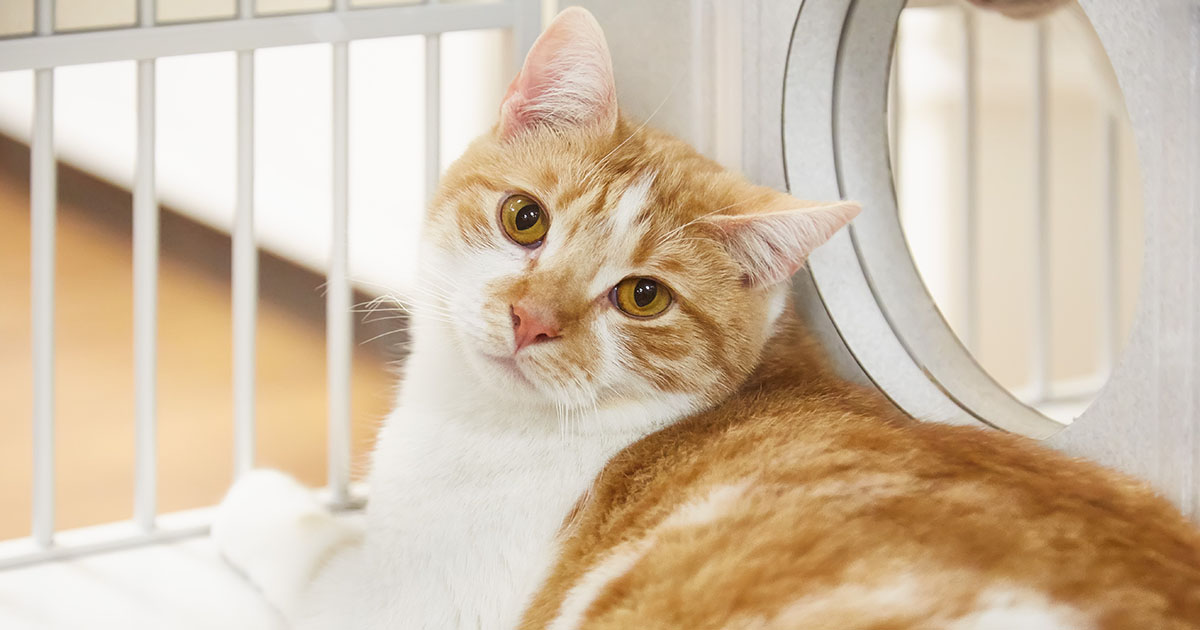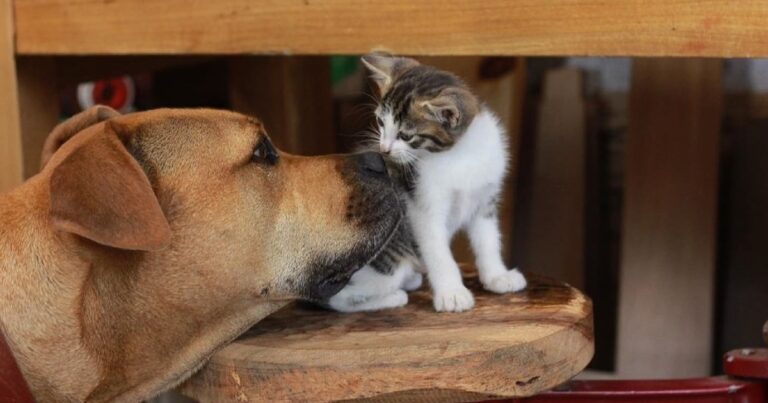“Rescue Me” is a recurring column by Samantha Randall, editor-in-chief at Top Dog Tips. She provides personal anecdotes and perspective about her life as a pet lover with a passion for cat and dog rescue. Today, she talks about rescuing cats.
Adopting a rescue cat is a wonderful way to get a grateful and loving companion while also saving a life. But before you run to the shelter or a rescue group to get a new cat on impulse, there are a few things to consider. I’ve mostly written about rescue dog adoption before, but over the years I’ve also rescued a few cats and have some tips to share with you so you can make the right choice.
Before You Adopt
1. Consider the Age and Personality of a Rescue Cat
These things will help you determine if the cat is right for you. For example, kittens are very energetic and demand a lot of attention. If you don’t have enough time to devote to training and playing with them, choose an adult cat that is already housebroken. Senior cats require more of your time due to different health conditions that often come hand-in-paw with older cats, and they could cost you more for the same reason.
Consider the temperament of the cat before you adopt. it. Are you looking for a lap cat or do you want a cat that sticks to themselves most of the time? Different cat breeds have different personalities. Do some research before you adopt and ask the shelter staff or rescue group to recommend a cat that suits your lifestyle and personality.
2. Consider Your Financial Situation
Even though cats are on average less expensive than dogs, the cost of having a cat is not insignificant. When you adopt a rescue cat from a shelter, you will have to pay the adoption fee, usually between $50 and $100. Fortunately, shelter cats are almost always spayed/neutered and vaccinated, which helps keep costs down.
When you adopt a cat, you may need to buy collars, tags, litter boxes, grooming materials, toys, etc. If you rent your home, you might be required to pay a pet deposit or a pet fee. After that, there are recurring costs like food, litter and veterinarian visits. According to the Business Insider, the cost of having a cat comes to around $1,000 for the first year. This number doesn’t account for pet health insurance, which is something you should purchase while your cat is healthy since it can save you money in the long run.
3. Take Your Home and Family into Account
Is your home large enough for a cat? Cats need a lot of space, and you will also need space for litter boxes, beds and feeding stations. Cats also need scratchers and interactive toys to keep them mentally stimulated. If you don’t have a lot of space, be creative with the space you do have and place these things at different levels. Take time to arrange your space to include scratchers and toys. Otherwise your cat will be bored, and that can lead to furniture scratching and other unwanted behaviors.
Do you live alone or with family or roommates? If you have roommates, get their consent and make sure that they are OK with having a cat. Also, every family member should be on board with getting a new cat.
Young children, particularly kids who haven’t been around animals before, won’t know how to handle a cat or a kitten. If you have small children, consider waiting a little bit before you adopt a cat, or choose an adult cat since they are usually more tolerant of kids than kittens are.
4. Don’t Rush the Adoption
When you go to the rescue shelter, walk through the cat room slowly to see how each cat reacts to you. Some of them will show interest in you. Have a short visit with the cats that seem friendly and that you are interested in. Check out their reactions to being petted or being picked up, but be patient and give them some time and space. The staff can also get you into a private room with a cat you’re considering so you can see how the two of you interact one-on-one. Come back once again, or even a few times, before you make your final decision.
If you have children, bring them to the rescue group or shelter to visit the cats you are interested in. See how the cat interacts with your kids and vice versa. There are many benefits to raising kids with pets around, but it’s an adjustment that cannot be taken lightly. Look for a feline companion that is patient around kids and cherishes their attention.
5. Don’t Hesitate to Ask a Lot of Questions
Ask anything that you think is important and can help you make your decision. For example, you could ask about the cat’s medical history, how they behave and any concerns the staff has about the cat you are interested in. Rescue groups are generally the better choice if you have never adopted a cat before because they are more familiar with their cats and can answer your questions better than shelter staff.
After You Adopt
6. Prepare Your Home for a Cat
Before you bring your new feline friend home, create a safe room for him or her. Cats are extremely territorial, and they often feel uneasy coming into a new home. Provide a small area for your cat where he or she can spend time for the first few days or even weeks. Put all the necessities in the room, like food and water bowls and a litter box.
7. Reserve Time for Bonding
It is very important to set aside some time for bonding with your new cat. It is best to adopt a new cat when you have enough time to help him or her adjust to a new living situation. Your companionship will certainly make the transition easier.
8. Visit a Veterinarian
Visit a veterinarian as soon as you adopt a new cat, even on your way home, if you can. This is particularly important if you have other pets at home. You need to be sure that your new pet is free of any parasites or diseases that can spread to other pets.
9. Introduce Your New Cat to Other Pets Slowly
If you have other pets, introduce them to the new addition carefully. It is best to keep them separated for the first few days. Choose a room for your new cat that will provide some access under the door. This will allow your pets to sniff each other without risk of confrontation and give them a chance to meet gradually. Wait for your new cat to feel confident and comfortable before you begin the introductions.
You need to be particularly patient if you have a resident cat. Since they are territorial, it will take more time for two cats to accept each other than a dog and a cat. A good trick is to swap their blankets often so they can get used to each other’s scent before they finally meet.
Cats can be harder to read than dogs, but rest assured that if you follow these tips, even the most inscrutable feline can be on its way to settling into your happy home.







